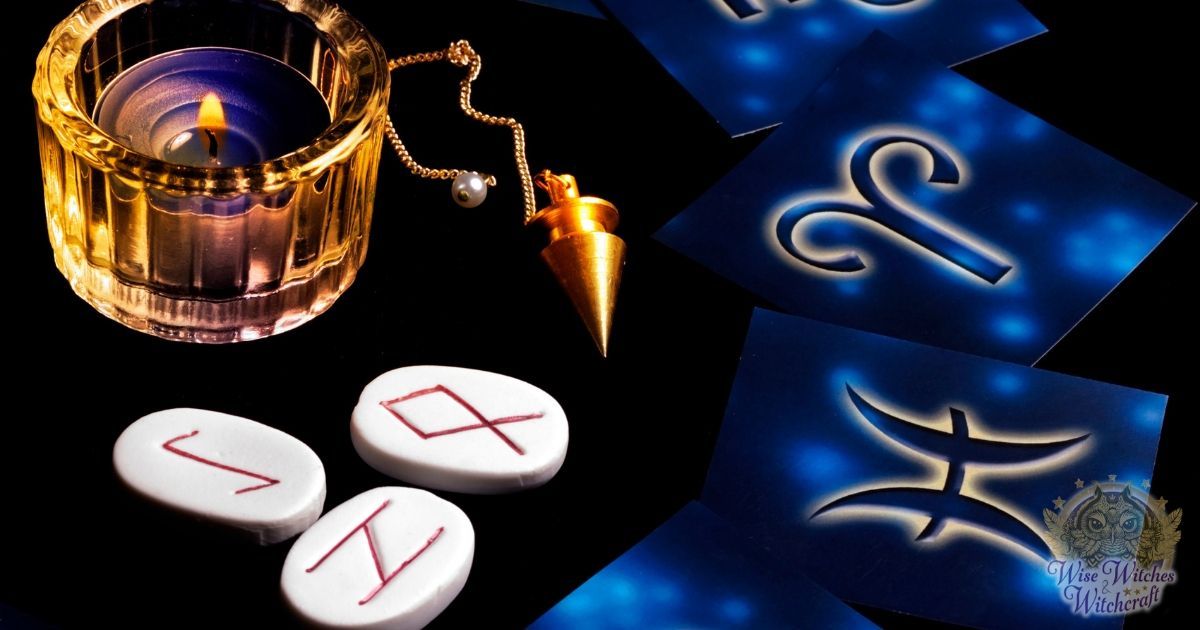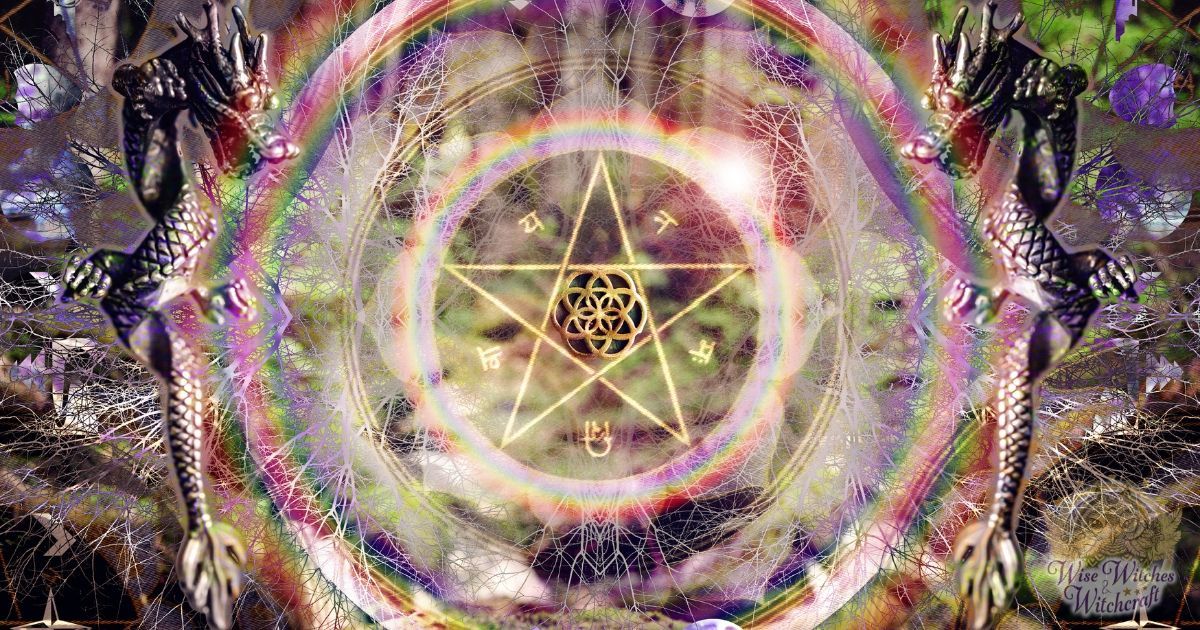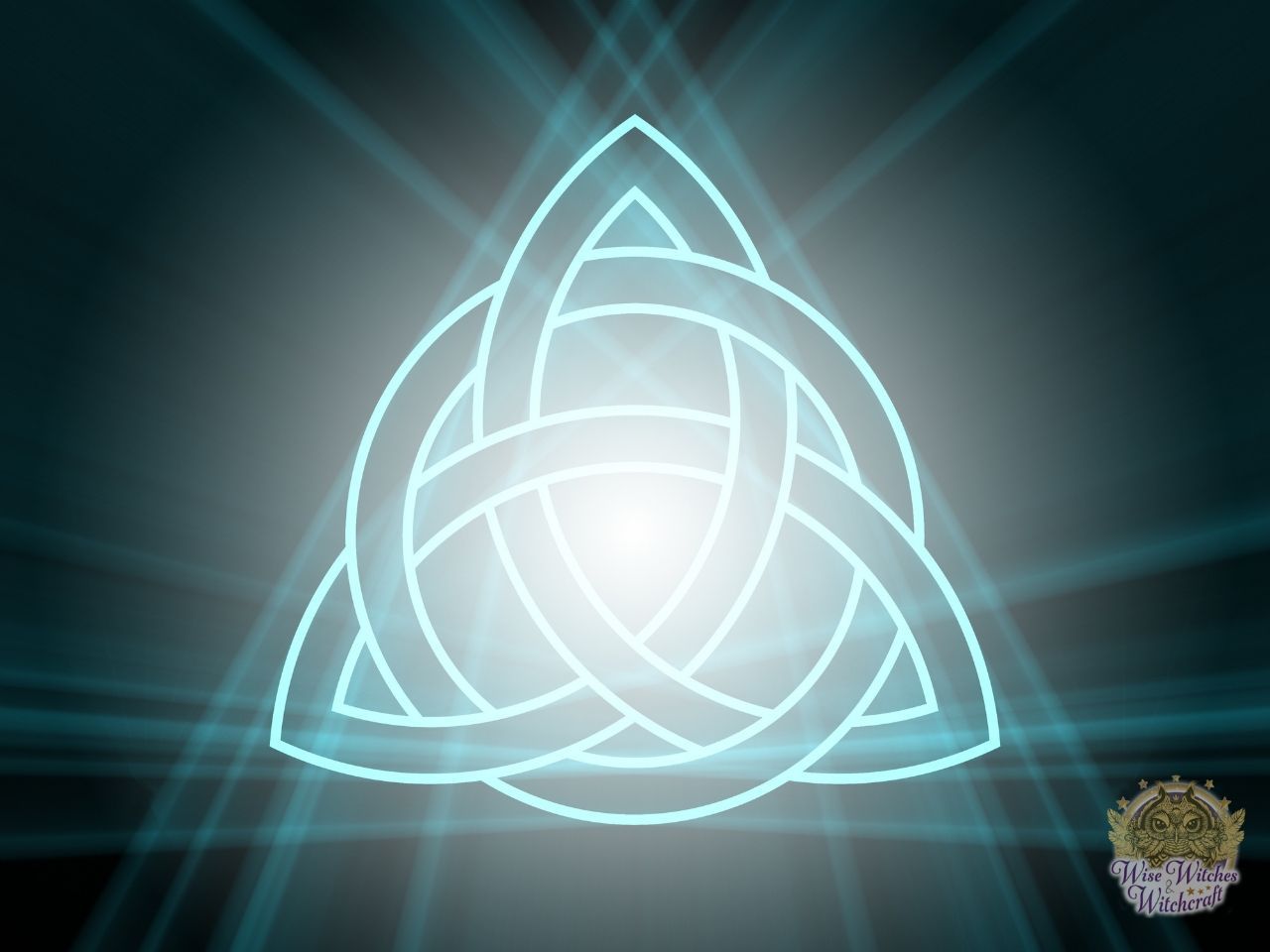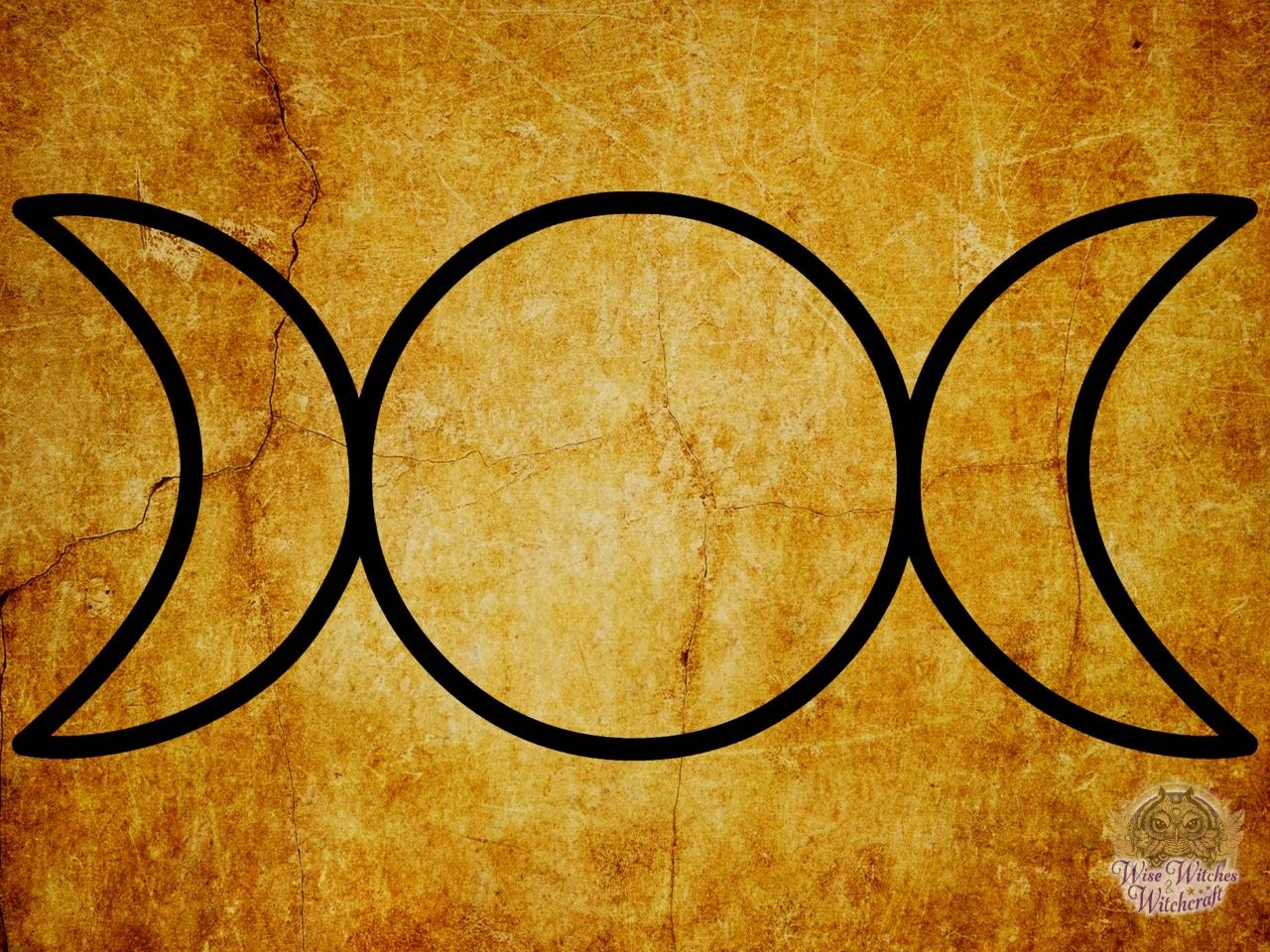Witchcraft Terms and Tools – Symbols

Symbols are very important in Wicca, and in Neopaganism in general, as they are in most religions. Various different symbols are used by Wiccans, similar to the use of the crucifix by Christians or the Star of David by Jews.
Among other uses, they may be worn as amulets or charms, or used to decorate altars or ritual circles.

Among the most notable are:
- Pentagram:
The five-pointed star known as the pentagram or pentangle, often circumscribed by a circle, symbolizes the five classical elements in Wicca (earth, air, fire, water and spirit), as well as the five appendages of the human body, the five senses and various other magical and symbolic associations. The pentagram was used symbolically in ancient Greece (particularly among the followers of Pythagoras), Mesopotamia and Babylonia, and was also used as a Christian symbol for the five senses or the five wounds of Christ. Cornelius Agrippa and others perpetuated the popularity of the pentagram as a magic symbol, keeping the Pythagorean attributions of elements to the five points.Six- and seven-pointed stars were also used with different symbolism. By the mid-19th Century, a further distinction had developed amongst occultists regarding the pentagram’s orientation: it was considered essentially “good” when shown with a single point upwards (depicting spirit presiding over the four elements of matter), but Eliphas Lévi called it “evil” when it appeared inverted (point down). The inverted pentagram came to be associated, particularly by Christians, with Satanism and evil, and the modern Satanism movement adopted the inverted pentagram (often with the head of a goat inside it) as the Sigil of Baphomet.
- Triquetra:

The word “triquetra” originally meant simply triangle or any three-cornered shape, but it has come to refer exclusively to a three-pointed figure composed of three overlapping “vesicae piscis” (the shapes formed by the intersection of two circles with the same radius), sometimes with an added circle in or around it. The triquetra has been found on runestones in Northern Europe and on early Germanic coins (where it presumably had some Pagan religious meaning), as well as in early Celtic art. It was later used by Christians as a symbol of the Trinity (Father, Son and Holy Spirit).
Nowadays, it is often used by Wiccans and other Neopagans to symbolize either the Wiccan Triple Goddess, the interconnected parts of our existence (Mind, Body and Soul), or many other concepts that seem to fit into this idea of a unity.
- Triple Moon:
The triple moon symbol, depicting the three phases of the moon (waxing crescent, full moon and waning crescent), is often used to represent the Triple Goddess of Wicca and Neopaganism, where the Goddess is ascribed the three aspects of Maiden (representing youthful enthusiasm and the promise of new beginnings), Mother (representing ripeness, fertility, sexuality and power) and Crone (representing wisdom, repose, death and endings). - Spirals, Knots and Mazes:
The spiral is one of the most ancient symbols found on every civilized continent. Due to its appearance at burial sites across the globe, the spiral most likely represented the “life-death-rebirth” cycle, or sometimes the sun (as ancient people thought the sun was born each morning, died each night and was reborn the next morning). A Celtic triple spiral, found on a number of Irish Megalithic and Neolithic burial sites, has been adopted by some Neopagans as a symbol of the Triple Goddess. Celtic knots and mazes of varying complexity are often used to represent the intricacy of Nature and of human thought. - Eight-Spoked Wheel:
The eight-spoked Wheel of the Year symbol marks the important holy days (or Sabbats) in the Wiccan ritual calendar. It is derived from the four-pointed Sun Wheel or Solar Cross, a pre-Christian European calendar marking the Solstices and Equinoxes. - Runes:
Letters from the Runic alphabets of the early Germanic languages are commonly used symbols in Neopaganism, partly from their association with pre-Christian cultures, and partly from their magical and divinatory associations.





